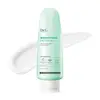What's inside
What's inside
 Key Ingredients
Key Ingredients

 Benefits
Benefits

 Concerns
Concerns

No concerns
 Ingredients Side-by-side
Ingredients Side-by-side

Water
Skin ConditioningCellulose
AbsorbentDipropylene Glycol
HumectantGlyceryl Caprylate
EmollientAcrylates/C10-30 Alkyl Acrylate Crosspolymer
Emulsion StabilisingCaprylyl Glycol
EmollientAllantoin
Skin ConditioningPanthenol
Skin ConditioningPolyglyceryl-10 Laurate
Skin ConditioningPropanediol
SolventArginine
MaskingDisodium EDTA
Glycerin
Humectant1,2-Hexanediol
Skin ConditioningButylene Glycol
HumectantSodium Hyaluronate
HumectantGlycosphingolipids
EmollientHydroxypropyltrimonium Hyaluronate
Ascorbic Acid
AntioxidantHydrolyzed Hyaluronic Acid
HumectantSodium Acetylated Hyaluronate
HumectantHyaluronic Acid
HumectantHydrolyzed Sodium Hyaluronate
Skin ConditioningSodium Hyaluronate Crosspolymer
HumectantPotassium Hyaluronate
Skin ConditioningWater, Cellulose, Dipropylene Glycol, Glyceryl Caprylate, Acrylates/C10-30 Alkyl Acrylate Crosspolymer, Caprylyl Glycol, Allantoin, Panthenol, Polyglyceryl-10 Laurate, Propanediol, Arginine, Disodium EDTA, Glycerin, 1,2-Hexanediol, Butylene Glycol, Sodium Hyaluronate, Glycosphingolipids, Hydroxypropyltrimonium Hyaluronate, Ascorbic Acid, Hydrolyzed Hyaluronic Acid, Sodium Acetylated Hyaluronate, Hyaluronic Acid, Hydrolyzed Sodium Hyaluronate, Sodium Hyaluronate Crosspolymer, Potassium Hyaluronate
Water
Skin ConditioningMyristic Acid
CleansingGlycerin
HumectantPotassium Hydroxide
BufferingStearic Acid
CleansingGlyceryl Stearate
EmollientPropanediol
SolventLauryl Hydroxysultaine
CleansingPalmitic Acid
EmollientSodium C14-16 Olefin Sulfonate
CleansingPotassium Benzoate
PreservativeSalicylic Acid
MaskingButylene Glycol
HumectantSorbitol
Humectant1,2-Hexanediol
Skin ConditioningSodium Chloride
MaskingCentella Asiatica Extract
CleansingAcrylates/C10-30 Alkyl Acrylate Crosspolymer
Emulsion StabilisingMelaleuca Alternifolia Leaf Oil
AntioxidantCetearyl Alcohol
EmollientMelaleuca Alternifolia Leaf Water
AntimicrobialMelia Azadirachta Leaf Extract
Skin ConditioningHydrogenated Polydecene
EmollientArachidic Acid
CleansingLauric Acid
CleansingSodium Citrate
BufferingMelia Azadirachta Flower Extract
Skin ConditioningTrisodium Ethylenediamine Disuccinate
Oleic Acid
EmollientTheobroma Cacao Seed Extract
AntioxidantDextrin
AbsorbentCitric Acid
BufferingDisodium EDTA
Pentylene Glycol
Skin ConditioningCaprylyl Glycol
EmollientChamaecyparis Obtusa Water
MaskingPinus Palustris Leaf Extract
TonicWater, Myristic Acid, Glycerin, Potassium Hydroxide, Stearic Acid, Glyceryl Stearate, Propanediol, Lauryl Hydroxysultaine, Palmitic Acid, Sodium C14-16 Olefin Sulfonate, Potassium Benzoate, Salicylic Acid, Butylene Glycol, Sorbitol, 1,2-Hexanediol, Sodium Chloride, Centella Asiatica Extract, Acrylates/C10-30 Alkyl Acrylate Crosspolymer, Melaleuca Alternifolia Leaf Oil, Cetearyl Alcohol, Melaleuca Alternifolia Leaf Water, Melia Azadirachta Leaf Extract, Hydrogenated Polydecene, Arachidic Acid, Lauric Acid, Sodium Citrate, Melia Azadirachta Flower Extract, Trisodium Ethylenediamine Disuccinate, Oleic Acid, Theobroma Cacao Seed Extract, Dextrin, Citric Acid, Disodium EDTA, Pentylene Glycol, Caprylyl Glycol, Chamaecyparis Obtusa Water, Pinus Palustris Leaf Extract
 Reviews
Reviews

Ingredients Explained
These ingredients are found in both products.
Ingredients higher up in an ingredient list are typically present in a larger amount.
1,2-Hexanediol is a synthetic liquid and another multi-functional powerhouse.
It is a:
- Humectant, drawing moisture into the skin
- Emollient, helping to soften skin
- Solvent, dispersing and stabilizing formulas
- Preservative booster, enhancing the antimicrobial activity of other preservatives
Acrylates/C10-30 Alkyl Acrylate Crosspolymer is a synthetic polymer. It is used to thicken and improve the texture of products. Due to its properties, it can prevent water and oil ingredients from separating.
Butylene Glycol (or BG) is used within cosmetic products for a few different reasons:
Overall, Butylene Glycol is a safe and well-rounded ingredient that works well with other ingredients.
Though this ingredient works well with most skin types, some people with sensitive skin may experience a reaction such as allergic rashes, closed comedones, or itchiness.
Learn more about Butylene GlycolCaprylyl Glycol is a humectant and emollient, meaning it attracts and preserves moisture.
It is a common ingredient in many products, especially those designed to hydrate skin. The primary benefits are retaining moisture, skin softening, and promoting a healthy skin barrier.
Though Caprylyl Glycol is an alcohol derived from fatty acids, it is not the kind that can dry out skin.
This ingredient is also used as a preservative to extend the life of products. It has slight antimicrobial properties.
Learn more about Caprylyl GlycolDisodium EDTA plays a role in making products more stable by aiding other preservatives.
It is a chelating agent, meaning it neutralizes metal ions that may be found in a product.
Disodium EDTA is a salt of edetic acid and is found to be safe in cosmetic ingredients.
Learn more about Disodium EDTAGlycerin is already naturally found in your skin. It helps moisturize and protect your skin.
A study from 2016 found glycerin to be more effective as a humectant than AHAs and hyaluronic acid.
As a humectant, it helps the skin stay hydrated by pulling moisture to your skin. The low molecular weight of glycerin allows it to pull moisture into the deeper layers of your skin.
Hydrated skin improves your skin barrier; Your skin barrier helps protect against irritants and bacteria.
Glycerin has also been found to have antimicrobial and antiviral properties. Due to these properties, glycerin is often used in wound and burn treatments.
In cosmetics, glycerin is usually derived from plants such as soybean or palm. However, it can also be sourced from animals, such as tallow or animal fat.
This ingredient is organic, colorless, odorless, and non-toxic.
Glycerin is the name for this ingredient in American English. British English uses Glycerol/Glycerine.
Learn more about GlycerinPropanediol is an all-star ingredient. It softens, hydrates, and smooths the skin.
It’s often used to:
Propanediol is not likely to cause sensitivity and considered safe to use. It is derived from corn or petroleum with a clear color and no scent.
Learn more about PropanediolWater. It's the most common cosmetic ingredient of all. You'll usually see it at the top of ingredient lists, meaning that it makes up the largest part of the product.
So why is it so popular? Water most often acts as a solvent - this means that it helps dissolve other ingredients into the formulation.
You'll also recognize water as that liquid we all need to stay alive. If you see this, drink a glass of water. Stay hydrated!
Learn more about Water